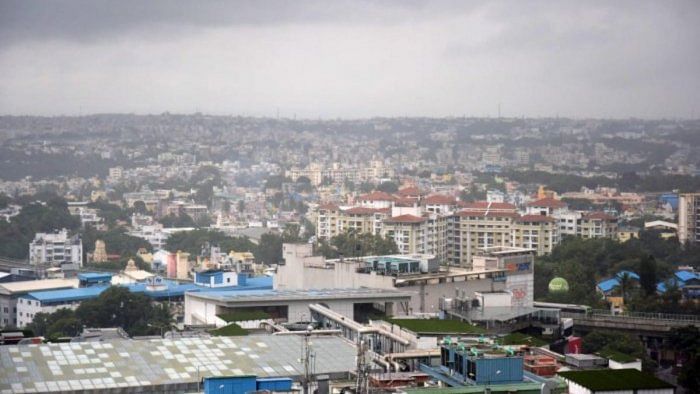

Are 243 wards enough to give Bengalureans a fair representation of their zillion problems in the Bruhat Bengaluru Mahanagara Palike (BBMP) Council? This question, though loaded, might look out of place at a time when the draft notification of the newly delimited wards is out in the public domain.
Objections have landed thick and fast on the manner in which wards are redrawn, and the motives behind it whatsoever, triggering a massive political backlash. But beyond all this lies a deeper, practical problem: Can a corporator represent the problems of a ward population close to a lakh?
400 wards
The B S Patil headed BBMP Restructuring Committee had recommended 400 wards to make the wards manageable. But, as panel member and urbanist V Ravichander points out, the 243 wards account for only a 25 per cent increase from 198. “In the 15 years since the last ward exercise was done, conservatively, the population growth has been roughly about 60 per cent.”
The contention is clear: Since the population per ward has inevitably grown, the number of wards should have been proportional. There is also another problem. “You are using the 2011 census for the ward delimitation exercise. In a decade of rapid growth, with outer wards growing more than the inner ones, your basis is inherently wrong,” he elaborates.
Wards outside ORR
Geographically, the population growth outside the Outer Ring Road (ORR) has been much more pronounced than the inner wards. This, he says, was not captured in the 2011 data. In reality, the number of people in the outer wards could be one lakh plus.
For years, the outer wards – added to the original 100 wards of the erstwhile Bangalore Mahanagara Palike (BMP) in 2007 - have suffered due to huge gaps in adequate civic infrastructure. Poor roads, underground drains, water supply and bus connectivity have all been patchy at best.
Civic services, for all practical purposes, should have been the rationale behind carving out new wards, particularly on the city’s outskirts. “Within a ward, you need a certain set of features and facilities, distances to ward offices, primary health centres, water and power utility offices should be reasonably similar between wards.”
Opaque criteria
Since the rationale and criteria have not been clearly spelt out, the entire exercise has been mired in politics. The State Urban Development Department has received a flood of objections, many from the Congress, the Aam Aadmi Party (AAP) and others.
Dubbing the process as unscientific, the parties have alleged that wards were broken, merged or split to favour the ruling party’s prospects in the forthcoming BBMP Council elections. “Yes, it is politically motivated and done in a haphazard manner. People living right next to each other now have to go to different ward offices. There is no logical demarcation of boundaries,” notes Bengaluru NavaNirman Party (BNP) General Secretary Srikant Narasimhan.
C V Raman Nagar MLA, S Raghu who headed the panel that went into the delimitation process, dismisses the allegations. He reminds that the BBMP Commissioner, the Urban DC, IAS officers and even MLAs from the Congress and Janata Dal were all part of the process. “Our officials went by the rule-book as per the population. Those opposing it do not want an election now as they fear a miserable loss,” says the legislator.
But why was the entire exercise based on the 2011 census data? “The other option was to wait for the 2021 census data. That would have meant postponing the BBMP elections,” he contends.
Estimating population
Urban policy expert Ashwin Mahesh is not convinced. “The 2011 data is outdated, and relying on it will mean at least three million are left out. You can easily estimate the current population, based on which ideally the number of wards should have been 320 to 340,” he notes.
The only positive that Ashwin sees in the 243-ward setup is this: “For the first time, we will have more wards, about 140, outside the Outer Ring Road than within. Almost all the focus of infrastructure development has been on the inner wards. Let’s see how that will change now.”
The assembly constituencies in the city are bound to be redrawn in 2026-27. So, what is the rationale behind ensuring that the Bruhat Bengaluru Mahanagara Palike (BBMP) ward boundaries do not cut across the constituency borders? This is a question posed by many urban policy experts.
Instead, they say, the boundaries should have been based on the digitised census block data with population figures and assets available, including ward offices, election booths, primary health centres, etc. The BBMP Restructuring Committee had made available the digitised census blocks. Each ward has eight to 10 census blocks. A combination of census blocks become a ward.
The current delimitation exercise is as per Section 7 of the BBMP Act, 2020. The section mandates that the delimitation process should rely on the published population data from the last census.
In 2008, following the expansion of the erstwhile Bangalore Mahanagara Palike (BMP) to BBMP, a delimitation exercise first increased the number of wards from 100 to 145. A year later, another delimitation increased this number to 198.